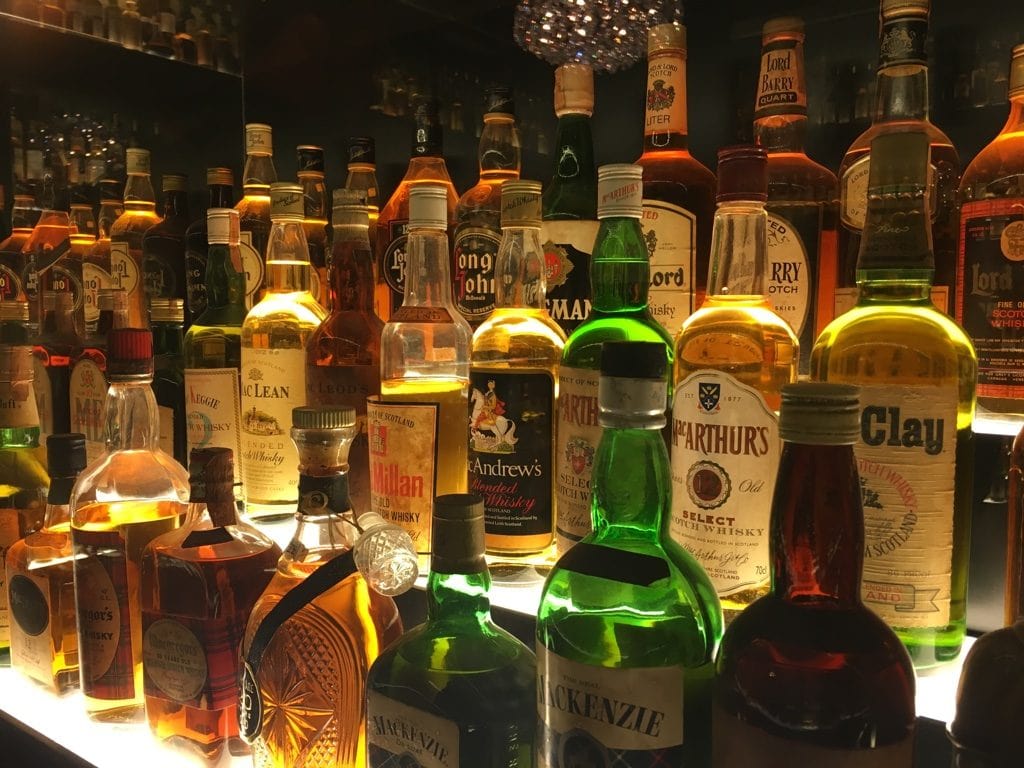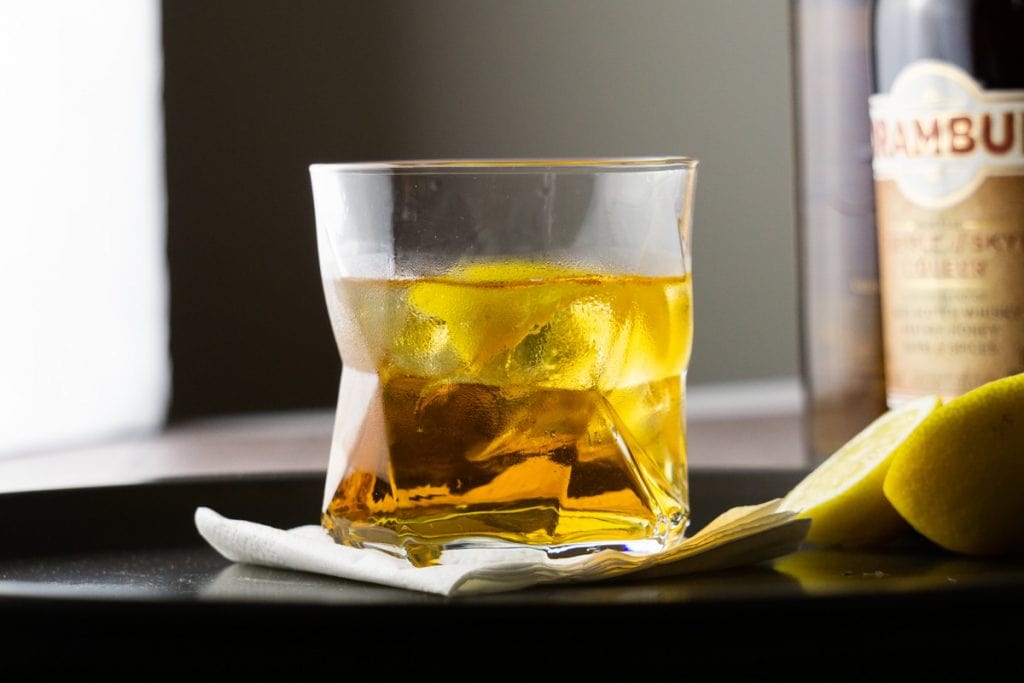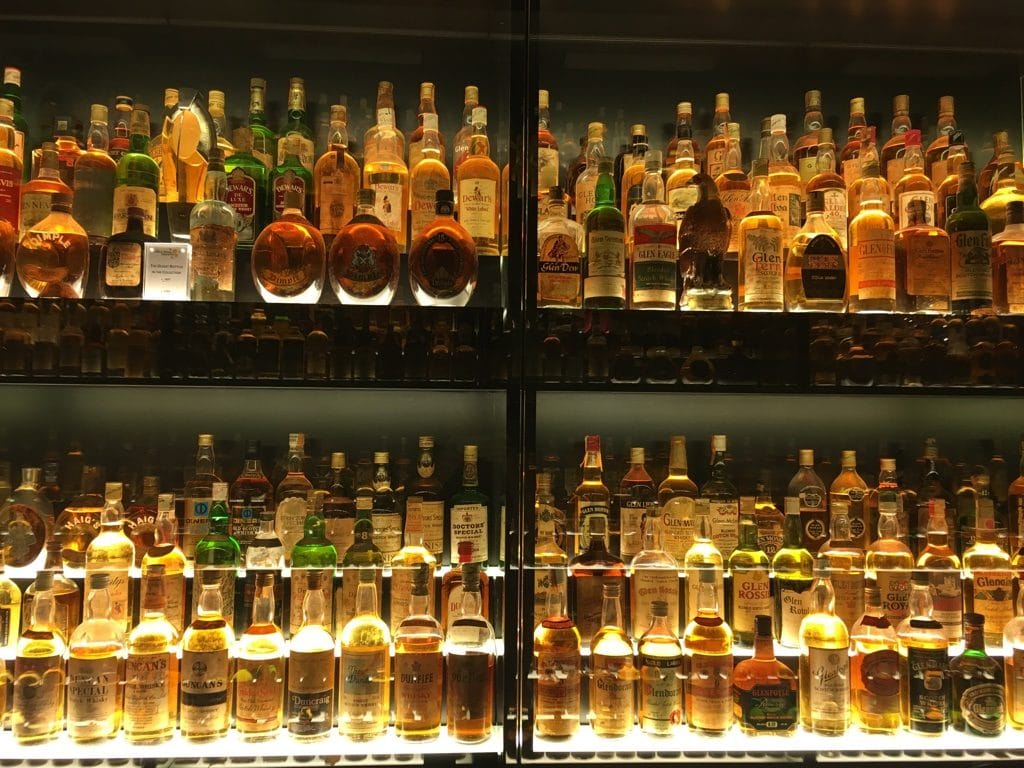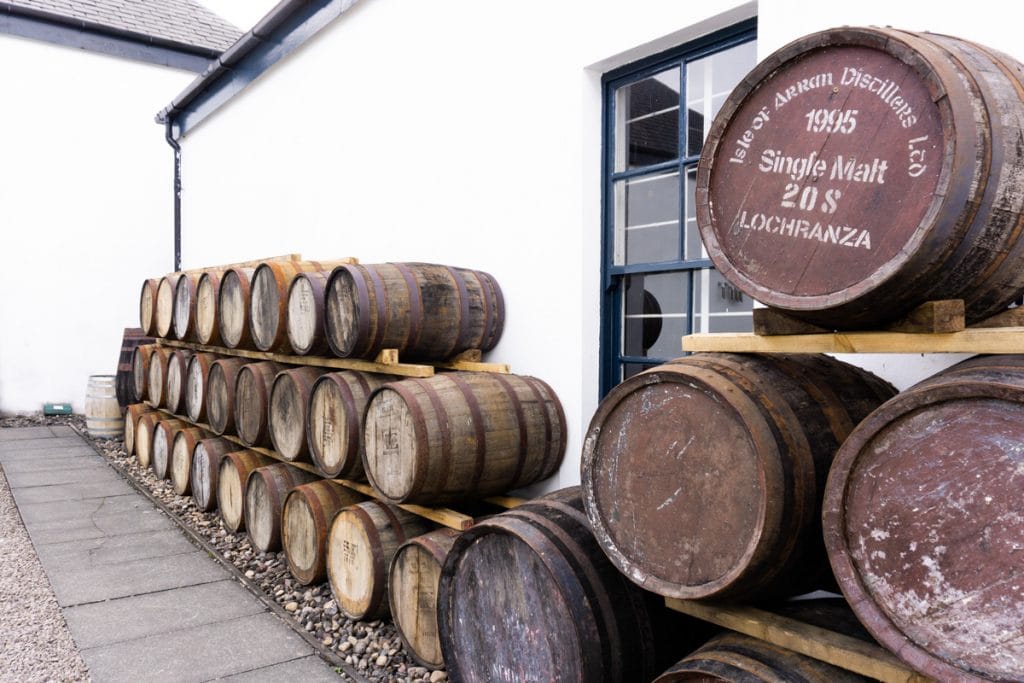There is no getting away from the fact that a lot has been written about Scottish Whisky and its deservedly excellent reputation. There is so much to say, in fact, that any post about whisky could be pages long and still leave many things unsaid!
As relative newbies to the world of whisky ourselves, we decided to start at the beginning, with everything from simple spelling questions to what exactly blended, single malt, and “peaty” mean. Even if you’re not a whisky novice, there may be things you’re unfamiliar with!
So, with no further ado, here’s Scottish Scran’s beginner’s guide to Scottish Whisky!
- Does whisky have an ‘e’?
- What's the difference between Scotch and Whisky?
- What is Scottish Whisky made from?
- What's the difference between grain and malt whisky?
- What's a Single Malt Whisky?
- What's a Double Malt Whisky?
- What's Blended Whisky?
- What does the age mean on a bottle of Scottish Whisky?
- What is the Angels' Share?
- How do you order a Scottish Whisky in Scotland?
- What's a Dram of Scottish Whisky?
- What mixer should you have with Scottish Whisky?
- How much water to add to Scottish Whisky?
- Should you order a single or a double Scottish Whisky?
- How much does Scottish Whisky cost?
- Which Scottish Whisky should you try first?
- What makes each whisky unique?
- What are the different Scottish Whisky regions?
- Islands
- What if I don't like the taste?
Does whisky have an ‘e’?
First of all, we have to address the “e” in the room! Is it ‘whisky’ or ‘whiskey’? Well, traditionally, if it’s distilled in Scotland it’s spelt without the ‘e’, if it’s made in Ireland or the United States then it’s spelt with the ‘e’.
It’s worth noting that to achieve the status of Scottish Whisky, the whisky must have matured in an oak cask for a minimum of 3 years. There is no quick way to make this sought-after drink. And 3 years is a minimum, often Scottish whiskies are matured for 10, 15 and even 50 years.

What’s the difference between Scotch and Whisky?
There is no difference between Scotch and whisky, they are both names for the same drink. However, the word “Scotch” tends to be used in North America and not the UK.
What is Scottish Whisky made from?
The Scotch Whisky Regulations are enshrined in law to create a set of rules that govern how a whisky must be made to be considered Scottish Whisky. They were created to preserve the flavour and reputation of Scotch whisky, so you know every time you buy or consume something labelled at such it has been held to these standards.
These include being made from only two natural ingredients, cereals, and water. It’s the distilling process that creates the magic and the difference in flavours!
What are the different types of Scottish whisky?
Aside from the Scottish whisky regions, which we’ll get into later, there are some basic differences between types of Scotch whiskies.

What’s the difference between grain and malt whisky?
Grain whisky can be made from many grains, including wheat, corn, and rye and is usually called blended grain whisky.
Malt whisky is made only from malted barley.
What’s a Single Malt Whisky?
Single malt whisky is made with just one type of malted barley. This also means it’s in one distillery using only one type of barley and water. It must be distilled in copper pot stills, aged for a minimum of three years in oak casks, and bottled in Scotland to achieve the status of a Scottish Single Malt.
What’s a Double Malt Whisky?
Double malt is produced in two distilleries from their own single malt and then blended together.
What’s Blended Whisky?
Blended whisky is a whisky that has been created by mixing/blending up to 60 different Scottish whiskies.
The reason for this? To create a distinct and unique taste with a character unachievable with the traditional distilling process. A master blender has the luxury of taking whiskies from each of the different whisky regions or various distilleries which can have very different flavour notes and combining them for a unique taste.
What does the age mean on a bottle of Scottish Whisky?
The age stated on a bottle of whisky, or the ‘age statement’ tells the buyer the age of the youngest whisky in the bottle, whether it’s a single malt, double, or blended whisky.
Once bottled the whisky stops ageing, so a 12 yr old Scottish Whisky will stay a 12 yr old no matter how long you keep it.
The whisky is aged to reduce the harsher flavours of the undistilled alcohol so older whiskies often taste smoother. The ageing also creates a unique flavour, scent and colour characteristic generated by the type of barrel each whisky distillery chooses to use to both mature and finish their whisky.
Distilleries can choose from many different kinds of oak barrels. They can be new barrels made from oaks from different places around the world (American oak, Irish oak etc) which give a flavour of their own, or they can be oak barrels previously used for holding/ageing other beverages like wine, port, sherry, rum, Madeira, and even beer. As you might imagine, these all flavour the whisky in different ways!

What is the Angels’ Share?
The Angels’ Share is used to describe the amount of whisky that evaporates from each wooden cask during the distilling process. The wooden pores of the casks allow for around 2% of the whisky stored to evaporate and leave the barrel and enter the air per year, providing the angels with their share, hence the Angels’ Share.
This is also part of the reason that aged whisky is more expensive because there’s a lot less of it! A 12-year whisky could lose around 24% as it’s aged.
This also means that once you have opened a bottle of whisky and it’s no longer airtight you’ve started to share it with the angels!
It seems the angels have quite a taste for Scottish whisky. In 2018 Scotland exported the equivalent of 41 bottles every second and 2% of the whisky taken to fill those bottles equates to quite a lot of money and quite a lot of whisky for the angels!
How do you order a Scottish Whisky in Scotland?
As you can imagine Scottish pubs and bars often have a variety of whiskies available to order and while ordering itself is simple, there are a lot of varieties and it’s good to have an idea of what you might want.
The simplest answer to this is to speak to your bar person. Describe what you like and they should be able to steer you in the right direction.
Now, how much to order and whether you should mix it with anything is a whole other dilemma…
What’s a Dram of Scottish Whisky?
You’ll hear the word dram or “a wee dram” in Scotland especially from locals when ordering or offering a measure of whisky.
What that measure is depends on the pourer but it’s good practice to pour with a heavy hand and make a “wee dram” a rather large measure!
The word dram doesn’t actually have its origins in Scotland but in ancient Greece where the word ‘drachma’ was used to describe a measure or value. Drachma made its way to Britain via the Latin version of the word, Dragma, being used to describe a measure.
Dragma over time may have become shortened and combined with the old English “Dragme”, also meaning a measure or unit. This it is believed how Dram came to be!
It’s recorded that a ‘dram’ was used as a measure or unit for medicines and it even features in Shakespeare’s works. But how it cam to describe Scottish whisky is unknown. Perhaps the use of dram to describe a shot has something to do with Scottish whisky’s “medicinal” uses? Hot toddy anyone?
What mixer should you have with Scottish Whisky?
The majority of Scottish whisky drinkers would not add a mixer, in fact, it’s actively frowned upon! At best you might add a dash of water or a cube or two of ice to bring out the flavours. But coke or lemonade? No, just no.
If you’re looking to enjoy the taste of Scottish whisky then adding another flavour will ruin what’s already spent years being finely crafted. If you’re just looking for a refreshing drink, then use any whisky, not the good stuff!
Having said that, whisky cocktails are popular, especially with those who may like a small taste but not want to have a straight dram. We’ve listed the recipes for some of our favourite whisky cocktails here! They also work really well for parties, like a Burns Supper.

How much water to add to Scottish Whisky?
By adding a little water or a cube of ice or two to whisky you can mellow the taste of the drink. You should do it to suit your pallet and allow you to savour the taste as it was intended rather than change it as an additional mixer would do.
Start slowly! We’re talking just a drop or two. Often you’ll be given a small jug of water so you can add your own amount or be asked how much you would like added.
Don’t add too much straight away because you can flood the drink and lose the flavour. Just add a small dash at a time, then try it, to “open the taste”.
Whisky purists might see this as a crime, ruining the whisky experience, but it’s your drink and your experience so don’t be afraid to ask for a little water!
Should you order a single or a double Scottish Whisky?
When you order your Scottish whisky you’ll be asked if you’d like a single or double or maybe a large or a small one. Spirits in Scotland are served in 25ml or 35ml measures so a double is 50ml or 70ml. It’s worth noting that a single shot of whisky will mean you are over the drink-drive limit. Take a taxi and drink responsibly!
If you’re new to whisky start small and find the drink you like while getting used to the strength of the spirit. Once you’ve found “your” whisky then feel free to order a double, we’ll have one too!
How much does Scottish Whisky cost?
This is a big question, like any drink everywhere you go will charge varying amounts, for example, a single whisky at our local pub starts from £4.20 ($5.60 USD).
This would be for a basic whisky. The problems arise when you start looking at the dustier bottles. There are bottles available that can cost hundreds of pounds for a single shot!
The moral of this story, by all means, ask your bar person for recommendations when picking your drink, they will know best what’s on offer, but make sure you ask the price first too!
Keep an eye out for Whisky Flights, which give you a selection of different whiskies to taste and compare. These can often be a cost-effective way to enjoy Scottish Whisky and figure out exactly what you like.

Which Scottish Whisky should you try first?
There are currently 120 whisky distilleries in Scotland including a number of independent bottlers who buy the new spirit from the bigger distilleries and then age and bottle it themselves, giving it their own unique flavour.
Depending on where in Scotland a whisky is made the flavour will differ because Scotlands unique landscape means that the everything from the source of the water to the amount of peat in the local area makes a difference to the taste.
Wherever it is made though, it uses the age-old tradition of turning pure spring water and barley into a distinctive drink.
This all means that whiskies can be wildly different in flavour and that even if someone thinks they don’t like whisky, they may just have not found the one they like yet!
What makes each whisky unique?
We’ve touched on it above but there are many different ways to make a whisky unique, starting from the water and the grain used to make it, to the type of barrel it’s aged in, how long it’s aged, and then whether it’s blended with any other whiskies too.
One step we haven’t mentioned is the drying of the malted barley. This can be done using peat fires which means the whisky goes on to have a”peaty” or smokey sort of taste.
Peat is also known as turf and is basically a layer of soil that is made from organic plant matter decomposing and can be cut out and dried to form peat bricks which are can be used as fuel in a fire. Peat can be found all over Scotland but is most common in the north and west of the country, including on many islands.

What are the different Scottish Whisky regions?
You’ll often hear people talking about the different Scottish Whisky regions.
The jury is out on how many Scottish whisky regions there are but the general consensus is that there are five (or maybe six): Speyside, Highlands, Lowland, Campbelltown and the Islands.
Islay is part of the Islands region, but the flavour and characteristics of the whisky made there are so distinctive that it is sometimes thought of as the sixth region in its own right.
Of course, distillers can choose to use whatever flavours they like and go “off-piste” from their region but it’s a good starting point!
Speyside
This area, east of Inverness, is home to over half of the whisky distilleries in Scotland. Malt whiskeys from this region are less peaty than some but are popular for having nutty fruit flavours, including pear, apple, honey, spice and vanilla.
Highlands
The wild Highland landscape of sea and moors creates an ideal environment for creating a peaty flavoured whisky which is still smooth and floral and can include flavours such as fruit, oak, smoke and heather.
Lowlands
The Lowland area is just north of England and is known for producing soft, smooth whiskies which are often triple distilled, and thus lighter. They can also taste of flowers, grass, toffee, ginger and cinnamon.
Campbeltown
The small Campbeltown region has three coastal whisky producers whose blends include tastes of peat, salt and smoke, fruit, toffee, and wool and can be triple or double-distilled.
Islands
Whisky from the Isles of Arran, Mull, Jura, Skye, and Orkney is mostly salted by the sea with flavours of citrus, and also smoke and peat, pepper, heather and honey.
Islay
The island of Islay has nine distilleries (!) making whiskies that involve flavours including peat, smoke and salt. Their whiskies often have a powerful aroma of smoke, iodine, and tar.

What if I don’t like the taste?
Never fear. It’s said there is a whisky for everyone, so it may be a case of trying various whiskies until you find the one that’s for you. Don’t worry about ice or water, either. There are reasons arguing both for and against adding a little H2O, but it’s your drink, so have it your way!
If you’re still not keen on the taste, why not try our whisky cocktails? They’re all the tradition with less of the taste!
- Atholl Brose – Whisky Cocktail Recipe
- Simple Whisky Cocktails That You Can Make at Home
- How to Make a Flying Scotsman Cocktail
We hope this helps you to begin to understand the amazing world of Scottish whisky. And remember, if buying a whole bottle seems intimidating, many whisky retailers also offer double-measure miniatures for you to try.
So there is no excuse. Pull up a chair, sit by the fire and enjoy a dram of Scottish whisky!
Have we missed something? What’s your favourite dram?

Thank you for the simple explanations. So many sites go on and on and confuse further the loveliness of the product. I’ve subscribed and will be following your posts and trying out the recipes. I’m excited to have found you both. Cheers!
That’s very kind, there’s nothing worse than not understanding an explanation, we like to keep things simple and to the point. Thank you for the lovely comment. Cheers, Phil & Sonja
Excellent beginners summary.
This was a great summary of Whisky and very well written. As a Scot myself I often get asked about different types of Whisky and now I can answer without putting my heritage to shame!
Thank you, Elliot. This was one of our toughest posts because there is so much info to condense down and so many facts to get write! We def needed a wee dram after we finished it.
I attended a guided whisky tasting where we were told that you should never put ice in whisky as it “locks in” the flavour.
Personally I dislike the fact that as the ice melts, & the whisky is sipped the whisky becomes more & more diluted completely changing the flavour, character & mouth feel of the whisky.
I prefer to add a little room temperature water to my taste.
The drink then remains the same from start to finish.
Indeed, it comes down to one’s personal taste, and I wholeheartedly go along with you when it comes to ice cubes in a dram – for me it’s almost blasphemy.
North Americans are very much into ice cubes – in many drinks…
Un résumé simple et facile à comprendre pour les novices.
Merci pour votre site qui me donne encore plus l’envie de me rendre en Ecosse dès que j’en aurai la possibilité.
Bonne continuation .
Merci pour votre commentaire. Nous espérons que vous pourrez bientôt visiter l’Ecosse.
I enjoyed this a great deal. I’m afraid I have become a bit of a whisky evangelist now at home, trying to introduce friends to the joys of a good single malt.
Thank you, I now understand some of the in and outs. I like mine neat and clean.
I have just discovered a rather nice whisky Beinn Dubh from the mountains of Cairngorm Speyside Distillery. A single malt but very tasty!